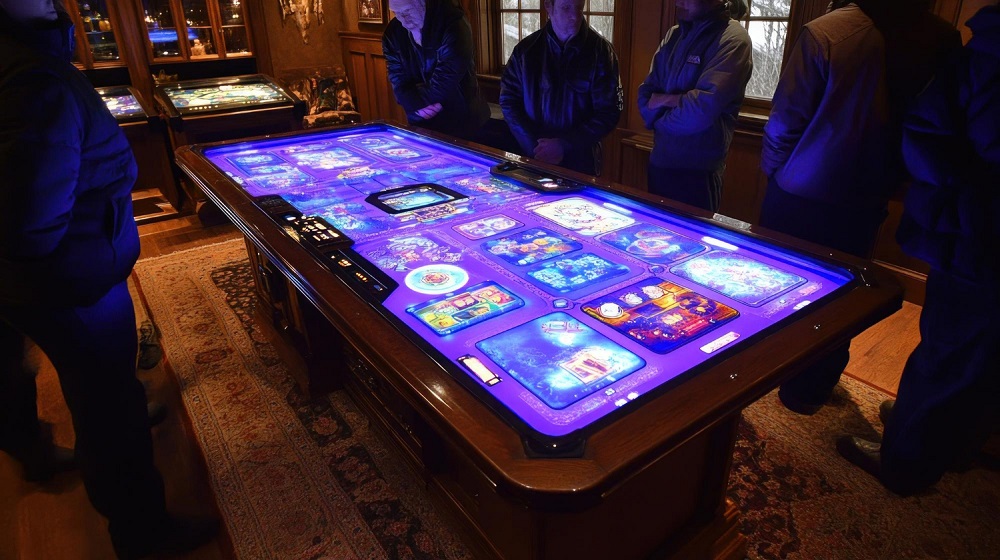Have you ever considered the profound influence that game design elements can have on your gaming experience?
The mechanics, dynamics, aesthetics, and narratives within a game all contribute to shaping how players interact with the game and maintain their engagement.
By examining these design components, we can gain insights into how they impact player engagement and enhance the overall gaming experience.
Elements of Game Design
When examining the influence of game design on player engagement, it’s crucial to explore the key components that form the foundation of game design. One critical element is the narrative structure of a game. Compelling storylines, well-developed characters, and immersive world-building can capture players’ interest and maintain their involvement in the game.
Graphics and visual aesthetics also play a significant role in attracting players. High-quality visuals can enrich the overall gaming experience and enhance the game’s appeal.
Moreover, sound design is vital for establishing an immersive ambiance. Engaging sound effects, music, and voice acting can evoke emotions and enhance player engagement. Through thoughtful development of these elements, game designers can craft captivating experiences that encourage continued player participation.
Mechanics and Player Interaction
In game design, mechanics and player interaction play a crucial role in shaping the overall gaming experience. The way players engage with core gameplay features significantly impacts their enjoyment and immersion in the game.
-
Player Agency: Offering players meaningful choices and consequences within the game enhances their feeling of control and investment in the gameplay experience. This can lead to a greater sense of autonomy and personalization for players.
-
Skill Mastery: Games that progressively challenge players with complex mechanics encourage skill development and mastery. This fosters a sense of accomplishment and growth as players improve their abilities over time.
-
Social Interaction: Multiplayer mechanics and cooperative gameplay provide opportunities for social connections and shared experiences among players. Collaborative gameplay can enhance communication skills and teamwork while fostering a sense of community within the gaming environment.
-
Feedback Loop: Immediate and clear feedback on player actions is essential for guiding decisions and improving player engagement. Constructive feedback helps players understand the consequences of their choices and encourages them to adapt their strategies for better performance.
Visual Appeal and Immersion
Improving the visual quality of a game is crucial for creating an immersive gaming experience for players. High-quality graphics, vibrant colors, and detailed environments can enhance the player’s connection to the virtual world. Visuals are essential for setting the mood, conveying emotions, and establishing the overall atmosphere of the game.
Immersion is strengthened when players feel integrated into the game world, and visually appealing graphics play a significant role in achieving this effect. Whether it’s the intricate character designs, stunning landscapes, or fluid animations, captivating visuals can foster a sense of connection and engagement with the game, ultimately enriching the player’s overall gaming experience.
Narrative and Emotional Engagement
For a game to effectively engage players, the narrative and emotional elements need to be meticulously crafted. Key aspects to consider include:
-
Immersive Storytelling: Crafting a coherent and engaging narrative that unfolds seamlessly throughout the gameplay experience is crucial. This helps to maintain player interest and investment in the game world.
-
Character Development: Developing complex and relatable characters can evoke emotions and drive the story forward. Players are more likely to engage with a game when they feel connected to the characters within it.
-
Emotional Impact: Games that can elicit a range of emotions, such as joy, sadness, or even fear, can create a more immersive experience for players. Emotional engagement can deepen the player’s connection to the game world.
-
Player Agency: Allowing players to make meaningful choices that impact the narrative can enhance their emotional investment in the game. Giving players agency can make them feel more connected to the story and its outcomes.
The Role of Feedback Systems
Feedback systems play a crucial role in gaming by providing immediate responses to player actions, aiding in navigation through challenges, and tracking progress. Visual indicators such as health bars and auditory cues for successful actions help players stay informed and motivated. Effective feedback enhances player satisfaction and connection with the game world, while constructive feedback can facilitate skill improvement. Game designers utilize feedback systems to shape player experiences and overall enjoyment of the game.
Conclusion
In summary, game design significantly influences player engagement and immersion. Elements such as mechanics, visuals, narrative, and feedback systems are key components that developers can utilize to create compelling experiences for players. These factors collectively contribute to the overall impact of game design on player engagement, establishing a strong connection between players and the virtual world. A meticulously designed game can enhance the gaming experience for all participants.

